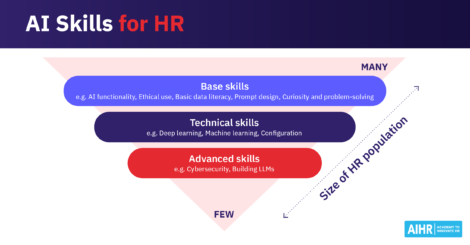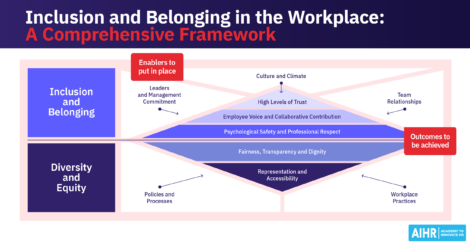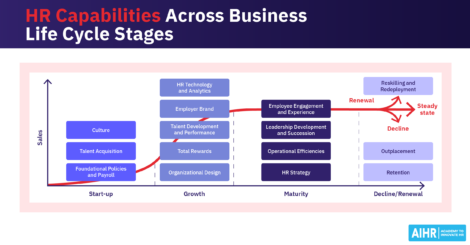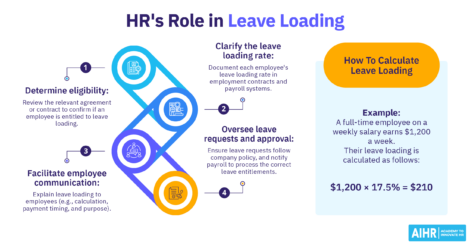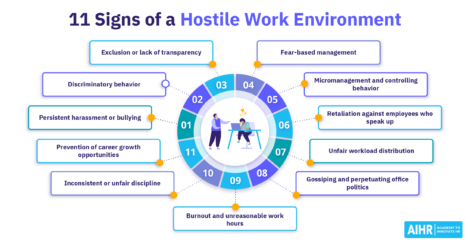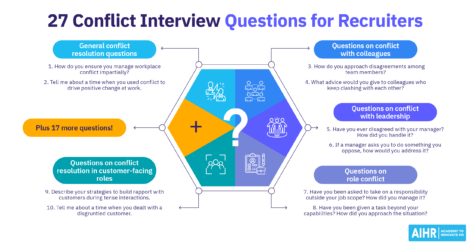Setting Boundaries in HR: 5 Ways To Do It Effectively
“You are not required to set yourself on fire to keep others warm,” says a famous quote. For HR leaders, setting boundaries allows them and their departments to focus on what truly drives impact and supports the business.

As HR professionals become more embedded in business operations, the line between being a “trusted advisor” and the go-to “problem-solver for everything” can often blur. While the instinct to help and support stakeholders is part of what makes HR so valuable, it also makes establishing healthy and clear boundaries difficult.
Too often, HR finds itself stretched thin, trying to strike a delicate balance between offering support at all levels and protecting the time, focus, and energy needed to remain effective and within the scope of their roles.
In this article, we explore why boundary-setting is essential for sustainable success and share five practical actions to help HR professionals establish healthier, more productive relationships—without sacrificing their impact.
Contents
What are boundaries at work?
Different types of boundaries
Why do HR professionals struggle with boundaries?
5 actions to set boundaries at work for HR
What are boundaries at work?
Boundaries at work refer to the intentional setting of limits regarding behaviors, responsibilities, or interactions in a professional environment. These limits can be explicit or implicit and must be reinforced over time.
For the HR department, these boundaries define the scope of their role and determine what HR handles directly versus what is managed by other teams or leaders, fostering clarity and trust in their role.
A clear definition of boundaries at work includes four key elements:
- Articulation of limits: Workplace boundaries specify what is acceptable or unacceptable in terms of behavior, tasks, or interactions.
- Relational context: Limits are set in the context of relationships with others.
- Explicit or implicit expression: Boundaries can be explicitly communicated through policies, job descriptions, or conversations or implied by workplace norms and culture.
- Ongoing reinforcement: For workplace boundaries to be effective, they must be consistently upheld over time.
Boundary setting is a critical yet often underestimated skill, essential for success in both personal and professional spaces. This is especially true in service-oriented roles like HR, where establishing clear professional boundaries is key to fostering effective, healthy, sustainable relationships over time.
Author’s highlight
Being a Human Resources professional, your instinct is to help people. So, as soon as an employee or even a manager would come to an HR, the natural response is,” That’s an opportunity for me to help.” Right? And that’s where the boundaries and the lines start getting thinner or sometimes very, very blurred.
—Laksh Sharma, HR Subject Matter Expert at AIHR
For HR professionals, boundary-setting is not just about self-preservation—it’s about sustaining effectiveness and delivering more significant organizational impact.
Clear boundaries offer multiple benefits, including increased productivity by allowing HR to focus on tasks that drive the most value and reduced stress by limiting involvement outside their scope to prevent overwhelm and frustration.
Setting professional boundaries also promotes a balanced workload, avoiding overcommitment and ensuring quality over quantity while lowering the risk of burnout by protecting time for rest and recovery, which is essential for long-term performance. Additionally, these boundaries ensure that HR does not end up working or making decisions on behalf of managers or leaders.
The shift toward remote work has amplified the need for boundaries. Gallup reports that 41% of employees experience burnout, while Future Forum by Slack highlights that 60% of employees struggle with blurred work-life boundaries. The pervasive nature of technology adds fuel to the fire, with 80% of workers admitting they find it increasingly hard to unplug.
Leadership significantly influences how boundary norms are established within a workplace. A Harvard Business Review study found that 70% of employees feel managers who respect personal boundaries boost team morale and performance. Conversely, 58% said poor boundary-setting by leadership contributes to toxic work cultures.
The link between boundaries and productivity is equally striking. Employees who maintain firm boundaries report 30% higher productivity and 23% greater job satisfaction than those who do not.
We discussed setting boundaries and managing expectations as HR leaders in our HR Dialogues series. Watch the full conversation below:
Different types of boundaries
Boundaries can be categorized into physical, mental, emotional, tangible, and intangible types:
- Physical boundaries are often the most straightforward—for example, respecting personal space.
- Mental boundaries align with values, morals, and principles. For instance, setting limits on tolerating disrespectful behavior.
- Emotional boundaries define the level of emotional involvement one is willing to invest in relationships, tasks, or issues.
- Workplace boundaries have become particularly relevant in the age of remote and digital work, as evidenced by the increasing global focus on “right-to-disconnect” legislation—a legal expression of mental boundaries between work and personal life.
Notably, boundaries are often subjective. Without explicit communication, what is acceptable to one person may differ significantly from another, making unspoken expectations a source of tension. Established team norms and ground rules around ways of working can help reduce subjectivity.
Author’s highlight
Does your team know what’s expected of them at all times? Can they make decisions independently around what is a priority? It means that you’ve set the tone in the right way. Another point is whether you know them as human beings because human beings are different. Treating people fairly and consistently does not mean treating them equally because their needs differ. And what they want from you, as a manager, differs as well.
—Dr Dieter Veldsman, Chief HR Scientist at AIHR
Why do HR professionals struggle with boundaries?
Our State of HR study found that many HR professionals enter the field driven by a desire to help people and make a difference. Coupled with the fact that most HR professionals report high levels of people advocacy and interpersonal skills, this leads to a natural tendency to want to support and guide managers.
While this noble intention is admirable, it often leads HR professionals to overextend themselves—sometimes at the cost of their wellbeing.
Beyond personal impact, HR teams also face organizational challenges:
- Overcoming historical labels: HR still battles outdated perceptions of being “administrative,” “reactive,” or “non-strategic.” HR professionals may hesitate to set boundaries for fear of reinforcing these stereotypes.
- Fear of losing credibility: HR often holds the perception that if they say no, they will lose credibility or create the perception that they are unwilling to support.
- Evolving roles: When HR introduces self-service tools or shifts to more strategic functions, managers accustomed to operational support can resist this transition, expecting HR to remain the “fixer” of everything.
- Ambiguity of expectations: New managers or business leaders unfamiliar with an HR operating model may require clear orientation regarding HR’s strategic role versus operational tasks. This is especially critical when HR leaders must build rapport and transition new leaders smoothly into aligned working methods.
As a result, HR professionals often take on tasks outside their scope, such as handling administrative duties, facilities, or events, simply because no one else wants to take them on.
They may also step in to act as managers, addressing people issues that leaders themselves should handle. Moreover, HR professionals can be held accountable for decisions outside their responsibility, as leaders often delegate people-related duties in ways that cause employees to perceive HR—not managers—as solely responsible for engagement, growth, and performance.
Author’s highlight
Of course, we always celebrate HR being approachable. We always celebrate HR being there to provide quick solutions and help.
But HR also sets themselves up for failure or long-term getting into problems if they just quickly start solving every problem. That’s what happens when HR is approachable. They want to just go on the floor and start helping people. They do not realize that a very critical layer, which is the first line manager or the people manager, is not getting the enablement if HR starts solving every problem.
—Laksh Sharma, HR Subject Matter Expert at AIHR
5 actions to set boundaries at work for HR
1. Clarify misconceptions about the HR’s role
It is important to communicate HR’s advisory model clearly to managers and leaders and help them understand how HR operates and what falls within the scope of HR work.
By defining HR’s role upfront—formally and consistently—managers are empowered to engage HR strategically while handling operational and transactional responsibilities. Encourage the adoption of self-service tools and tiered HR support where available, and proactively reinforce these processes whenever boundaries are tested.
This action is particularly important when the HR operating model has changed or when new managers and leaders join the organization with different expectations of HR’s role.
Illustrative example
The managers at GlobalTech Inc., a multinational tech company, often relied on HR for routine tasks like leave approvals and policy questions. To address this, the CHRO introduced a transparent HR advisory model that defined HR’s role in three tiers: self-service tools for operational tasks, HR operations for complex cases, and strategic advisory for broader workforce needs. Managers were trained on the new model and encouraged to use digital self-service tools for day-to-day responsibilities.
When Chris, a team leader, needed help approving an employee’s parental leave, he first checked the HR portal and found clear instructions. When he contacted HR Business Partner Sarah for further guidance, she reinforced the process: “The portal is perfect for tasks like this—reach out to me when you need support with bigger team challenges or strategies.” This consistent messaging empowered Chris to handle routine tasks independently while HR focused on strategic priorities.
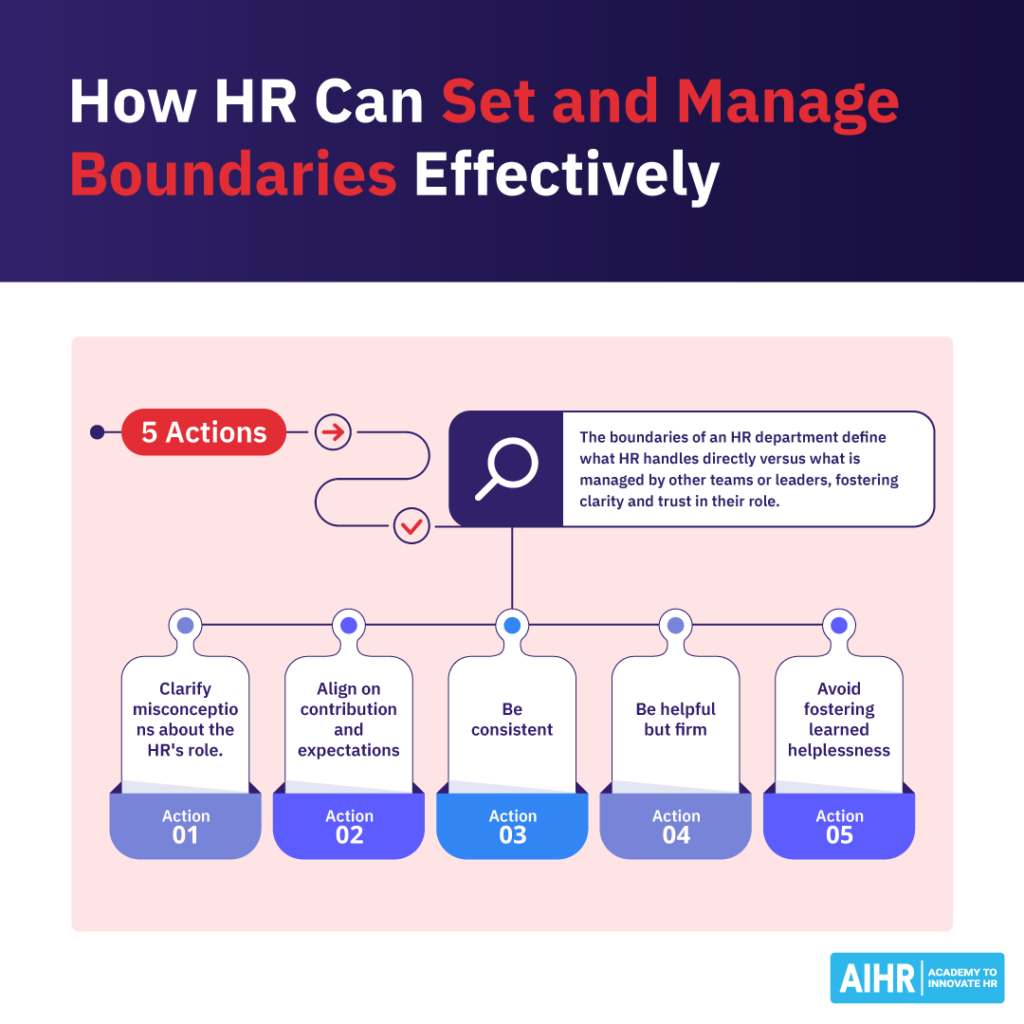
2. Align on contribution and expectations
Establish clear expectations for where managers and leaders need to take ownership—whether in coaching teams, driving engagement, or participating in HR programs. HR should focus on advising, monitoring, and supporting decision-making, not stepping in to manage it.
Continuously clarify and reinforce these boundaries to ensure managers’ accountability remains. HR can adopt a top-down approach to setting expectations. That means setting expectations with the leader and seeking support from the leader to build and align managers’ expectations.
Illustrative example
At FutureWorks Inc., a growing manufacturing company, managers expected HR to step in and resolve team performance issues. To set their boundaries, HR redefined their role as advisors and support partners while establishing clear expectations for managers to take ownership of coaching teams, driving engagement, and participating in HR programs.
For example, when a manager, Lisa, struggled with low team morale, she initially asked HR to intervene directly. Instead, her HR point of contact, David, coached her on identifying root causes and implementing an engagement plan. David provided tools, feedback, and ongoing support but reinforced that Lisa was responsible for driving and managing the solution.
3. Be consistent
Consistency is key to setting and maintaining boundaries. By staying steady and reliable in their approach, HR professionals help managers, leaders, and employees grasp their roles and what’s expected of them. This fosters trust and minimizes reliance on HR for decisions that rightfully belong with managers.
Illustrative example
At InnovateCorp, managers often relied on HR to handle issues better suited for the management chain—such as team conflicts or performance concerns. HR set out to resolve this by adopting a consistent approach to setting boundaries and helping managers understand their responsibilities while providing support without taking over.
Tom, one of the managers at the company, approached HR about an underperforming employee. The HR Business Partner of his department, Mia, reinforced the process: “I’m here to advise and guide you, but leading the performance conversation is your responsibility.” Mia provided Tom with helpful tools and talking points, ensuring he felt prepared, but the conversation and decisions were his own.
By consistently reinforcing boundaries, HR helped managers clarify their roles, build confidence in the process, and reduce their reliance on HR for day-to-day decisions. Over time, this approach empowered managers to take ownership, strengthened trust, and solidified the partnership between HR and leadership.
4. Be helpful but firm
HR’s role is to enable, guide, and support—not to solve every problem. When approached with issues outside its scope, HR should redirect stakeholders to the appropriate resources, tools, or people. Be empathetic and helpful, but remain firm in upholding boundaries unless intervention is necessary.
Illustrative example
Managers frequently turned to HR for help with team issues within their responsibilities at SynergyCo. Rather than stepping in to fix problems, HR started putting more emphasis on enabling and supporting managers rather than stepping in to fix problems.
For example, Alex, a manager, asked HR to mediate a minor team conflict. But the HR representative, Priya, responded with empathy: “I know this feels tough, but it’s a great opportunity for you to address the issue directly. I’ll equip you with tools, tips, and guidance, but you’re the one who needs to lead this conversation.”
Priya provided a practical conflict resolution guide and offered coaching, making sure Alex felt confident and prepared to tackle the situation himself.
5. Avoid fostering learned helplessness
Overstepping boundaries can inadvertently create dependency, where managers rely on HR to make decisions. Empower managers to take accountability for their teams by equipping them with the necessary skills, tools, and confidence.
Illustrative example
At Apex Solutions, HR noticedd that managers increasingly leaned on them for team performance and engagement decisions. To shift this pattern, HR aimed to equip managers with the skills, tools, and confidence to take ownership of their teams.
For instance, when Sarah, a manager, approached HR to determine the next steps for an underperforming employee, Jordan from HR guided her thoughtfully: “This is your decision to make, but I’m here to support you. Let’s talk through your options, and I’ll help you feel confident moving forward.” Jordan coached Sarah on performance management best practices and shared a decision-making framework she could follow.
By holding firm on boundaries and providing the right resources, HR reduced dependency and fostered accountability. Over time, managers like Sarah developed the confidence to make independent decisions, creating stronger and more decisive leadership.
Getting started
Setting and managing boundaries is crucial for HR to maintain its strategic impact and credibility. By clearly defining roles, aligning expectations, and consistently reinforcing these boundaries, HR empowers managers to take ownership, supports employees, and adds significant value to the organization.
Boundaries aren’t barriers—they’re tools that build trust, encourage accountability, and drive effectiveness. As HR continues to evolve, maintaining these boundaries will solidify its role as a trusted partner in shaping the workplace of the future.
To evaluate your current boundaries, consider asking yourself:
- Do I clearly understand the scope of my role and responsibilities?
- Are managers aware of where HR should be involved versus where they need to take ownership?
- Are boundaries respected, or do I regularly take on work outside my scope?
- How can I provide support without overstepping my advisory role?
- What steps can I take to ensure consistency in boundary-setting across the organization?
Learn more
Related articles
Are you ready for the future of HR?
Learn modern and relevant HR skills, online








